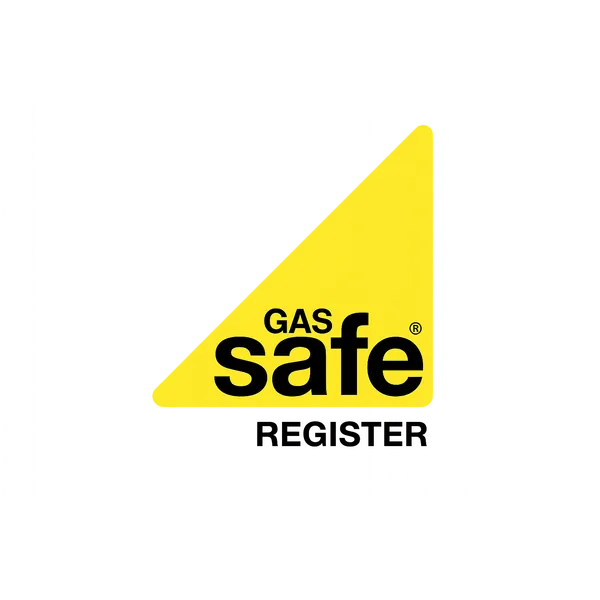Case Study: Upgrading a Social Housing Estate with Renewable Technology
Project Overview
In the heart of a northern English city, a 1960s-built social housing estate stood as a testament to post-war construction methods - and their limitations. The "Maplewood Estate" (name anonymised) comprised 142 properties, primarily two and three-bedroom houses, housing approximately 400 residents. Like many social housing developments of its era, the estate faced significant challenges: poor thermal performance, high energy costs, and resulting fuel poverty among tenants.
CRG Direct was commissioned by the housing association to deliver a comprehensive renewable technology upgrade programme, with dual objectives: reducing carbon emissions in line with the UK's 2050 net-zero targets, and alleviating fuel poverty through lower energy bills for residents.
Baseline Conditions: The Challenge
Before intervention, the Maplewood Estate presented a classic case of energy inefficiency in social housing:
Building Fabric Issues
- Poor insulation: Original cavity wall construction with no insulation
- Single-glazed windows: Significant heat loss through outdated fenestration
- Inefficient heating systems: Aging gas boilers with average efficiency ratings of 65-70%
- Draught problems: Poor sealing around doors and windows
- Cold bridging: Thermal bridges at structural junctions causing localised condensation
Energy Performance
An initial energy assessment revealed alarming statistics:
- Average Energy Performance Certificate (EPC) rating: E/F
- Typical annual heating costs: £1,200-£1,800 per household
- Carbon emissions: 4.2 tonnes CO₂ per property annually
- 68% of households classified as experiencing fuel poverty
Tenant Impact
Surveys conducted before the project highlighted the human cost of these conditions:
- 42% of residents reported choosing between heating and eating during winter months
- 35% experienced damp or mould issues
- 28% reported health issues exacerbated by cold living conditions
- Average indoor winter temperatures: 15-16°C
Technologies Deployed: A Holistic Approach
Our strategy involved a whole-house retrofit approach, combining multiple technologies to achieve maximum impact:
Primary Heating Upgrade: Air Source Heat Pumps
We installed 142 air source heat pumps (ASHPs) across the estate, selected for their efficiency and suitability for the UK climate:
- Model specification: 8kW monobloc units with seasonal performance factor (SPF) of 3.2
- Distribution system: Existing radiators upgraded to low-temperature compatible models
- Hot water provision: Integrated 200-litre hot water cylinders
- Controls: Smart thermostats with zonal control capabilities
Solar Photovoltaic Integration
Each property received a 3.2kWp solar PV system:
- Panel configuration: 8 x 400W monocrystalline panels
- Inverter technology: Hybrid inverters with battery readiness
- Mounting: Roof-integrated systems preserving aesthetic appearance
- Monitoring: Real-time generation tracking accessible to tenants
Building Fabric Improvements
To complement the renewable systems, we addressed the fundamental thermal performance:
- Wall insulation: Full cavity wall insulation using bonded bead system
- Loft insulation: Increased to 300mm depth with breathable membrane
- Window replacement: A-rated double glazing throughout
- Draught proofing: Comprehensive sealing of openings and ventilation upgrades
Smart Energy Management
Each property received an energy management system including:
- Smart meters: Half-hourly consumption monitoring
- Energy displays: Real-time feedback on usage and costs
- App integration: Tenant-accessible energy management platform
- Demand response capability: Future-proofing for smart grid integration
Implementation Process: Phased Delivery
The project was delivered over 18 months using a carefully planned phased approach:
Phase 1: Community Engagement (Months 1-3)
- Tenant information sessions and one-to-one consultations
- Energy advice workshops and behavioural change programmes
- Temporary accommodation arrangements for disruptive works
- Establishment of tenant liaison group
Phase 2: Fabric First (Months 4-9)
- Sequential property upgrades focusing on insulation and windows
- Quality assurance through thermal imaging and air tightness testing
- Minimal disruption through careful scheduling
Phase 3: System Installation (Months 10-15)
- Heat pump and solar PV installation in coordinated teams
- Commissioning and performance verification
- Tenant training on new systems
Phase 4: Monitoring and Optimisation (Months 16-18)
- Post-installation performance monitoring
- System fine-tuning based on usage patterns
- Ongoing tenant support and maintenance handover
Measurable Outcomes: Energy and Carbon Savings
Energy Performance Transformation
Post-installation monitoring revealed significant improvements:
- Average EPC rating improvement: From E/F to B
- Energy consumption reduction: 45% average decrease in grid electricity usage
- Carbon emissions reduction: 3.1 tonnes CO₂ per property annually (74% reduction)
- Solar generation: Average 2,800 kWh per property annually
Financial Impact for Tenants
The combination of reduced consumption and self-generation delivered substantial bill savings:
- Average annual energy bill reduction: £680 per household
- Payback period: 7-9 years for the housing association
- Fuel poverty reduction: From 68% to 22% of households
System Performance Metrics
Technical monitoring confirmed system efficiency:
- Heat pump performance: Average SPF maintained at 3.1-3.3
- Solar self-consumption: 35-40% of generation used directly
- System reliability: 98.7% uptime across all installations
- Maintenance requirements: Minimal, with remote monitoring identifying issues proactively
Tenant Feedback: The Human Dimension
Quality of Life Improvements
Post-project surveys and interviews revealed profound impacts on resident wellbeing:
"For the first winter in 15 years, we haven't had to wear coats indoors. The difference it's made to our family's health, particularly for our asthmatic son, is incredible." - Sarah, resident for 12 years
Energy Literacy and Engagement
Tenants reported increased understanding and control over their energy use:
- 78% of residents actively using energy management apps
- 65% reporting behaviour changes based on energy feedback
- 42% participating in additional energy saving initiatives
Thermal Comfort
Objective measurements matched subjective experience:
- Average winter indoor temperatures: 19-21°C
- 94% of residents reporting improved comfort levels
- 87% noting reduction in condensation and damp issues
Lessons Learned: Insights for Future Projects
Technical Considerations
- Heat pump sizing is critical: Oversizing leads to short cycling; careful load calculations are essential
- Hybrid systems have value: Maintaining gas backup for peak winter demand improved tenant acceptance
- Solar orientation matters: East-west split arrays provided better load matching than south-only
- Monitoring is non-negotiable: Continuous performance tracking enables optimisation and identifies issues early
Community Engagement Strategies
- Early involvement is key: Tenants involved in planning reported higher satisfaction
- Clear communication essential: Regular updates and transparent timelines reduced anxiety
- Training pays dividends: Comprehensive system operation training reduced support calls by 60%
- Peer influence powerful: Early adopters became champions influencing sceptical neighbours
Project Management Insights
- Phased approach reduces disruption: Sequential works minimised impact on community life
- Quality assurance throughout: Regular inspections prevented costly remedial works
- Supply chain coordination: Aligning multiple contractors required meticulous planning
- Contingency planning: Weather delays and supply chain issues necessitated flexible scheduling
Policy and Funding Considerations
- Multiple funding streams: Combining energy company obligation (ECO) funding with social housing decarbonisation fund maximised project viability
- Long-term maintenance planning: Establishing sinking funds for system replacement ensured sustainability
- Regulatory compliance: Early engagement with building control streamlined approvals
- Future-proofing: Designing for potential battery storage and vehicle-to-grid capabilities
The Broader Impact: Scaling the Approach
The success at Maplewood Estate demonstrates that comprehensive retrofit is not only technically feasible but delivers multiple benefits:
Replicability Across the Social Housing Sector
- Similar estates nationwide could achieve comparable results
- Standardised approaches reduce costs through economies of scale
- Supply chain development creates local employment opportunities
Contribution to National Targets
- Direct contribution to UK's 2050 net-zero ambitions
- Model for private rented sector improvements
- Blueprint for whole-area retrofit programmes
Economic Benefits
- Reduced strain on national grid through distributed generation
- Lower NHS costs through improved health outcomes
- Local economic stimulus through installation and maintenance contracts
Conclusion: A Model for Sustainable Social Housing
The Maplewood Estate transformation stands as compelling evidence that social housing can lead the transition to low-carbon living. By combining technical excellence with community-centred delivery, we achieved the dual objectives of environmental sustainability and social justice.
The 45% energy savings, 74% carbon reduction, and dramatic improvement in tenant wellbeing demonstrate that investing in renewable technology for social housing delivers returns that extend far beyond energy bills. It creates warmer, healthier homes while building more resilient communities.
As we face the twin challenges of climate change and fuel poverty, projects like Maplewood Estate show the way forward - proving that with the right approach, we can create housing that is both sustainable and socially equitable.
Inspired by this case study? CRG Direct specialises in delivering renewable technology solutions for social housing providers. Contact our team to discuss how we can help transform your housing stock.















